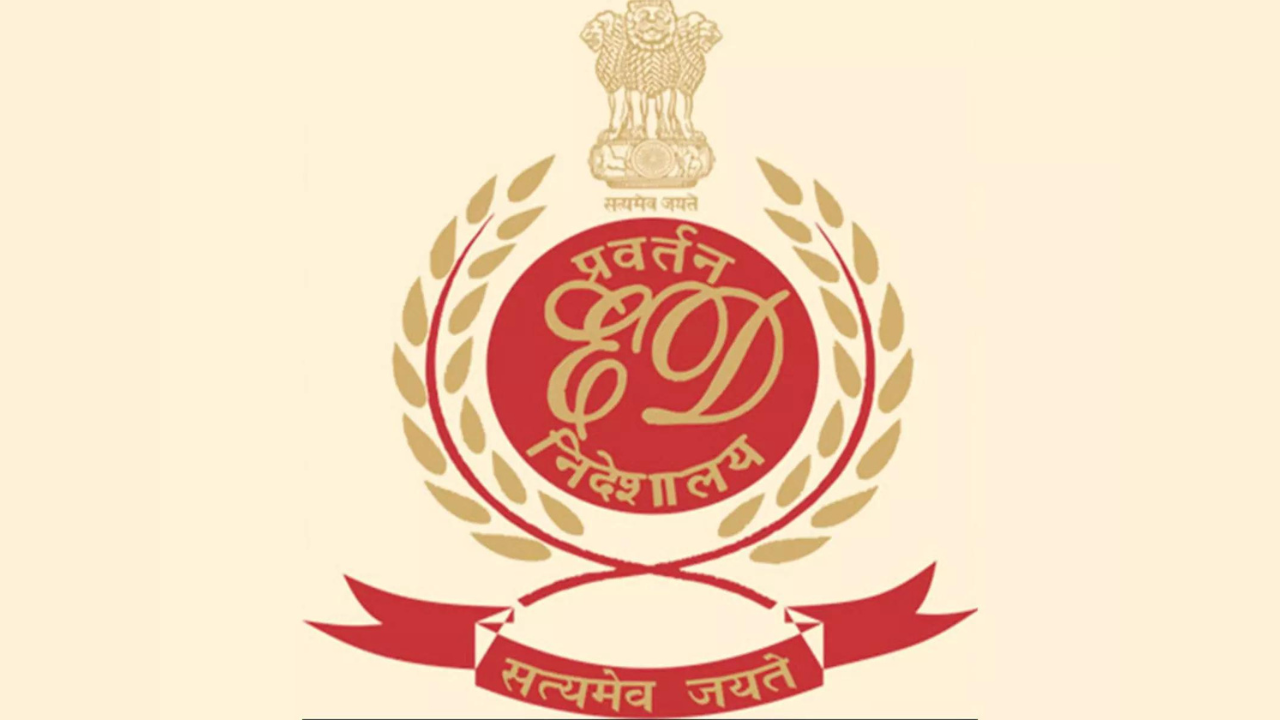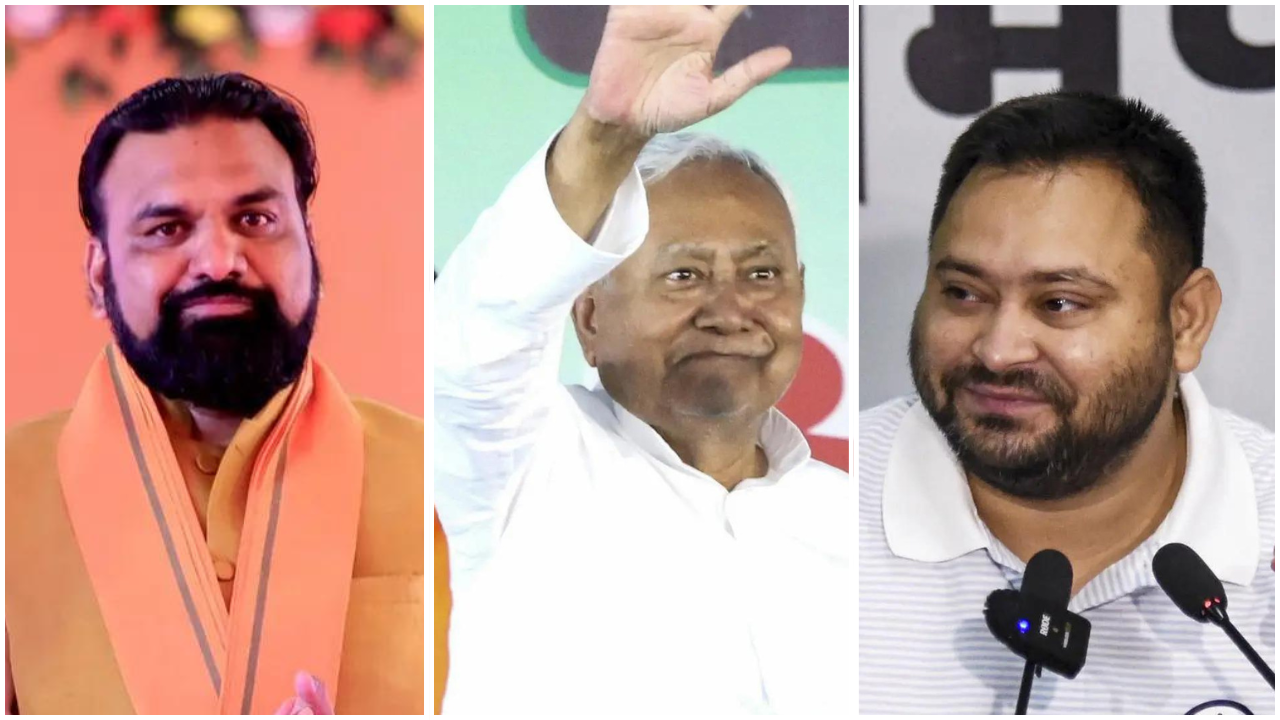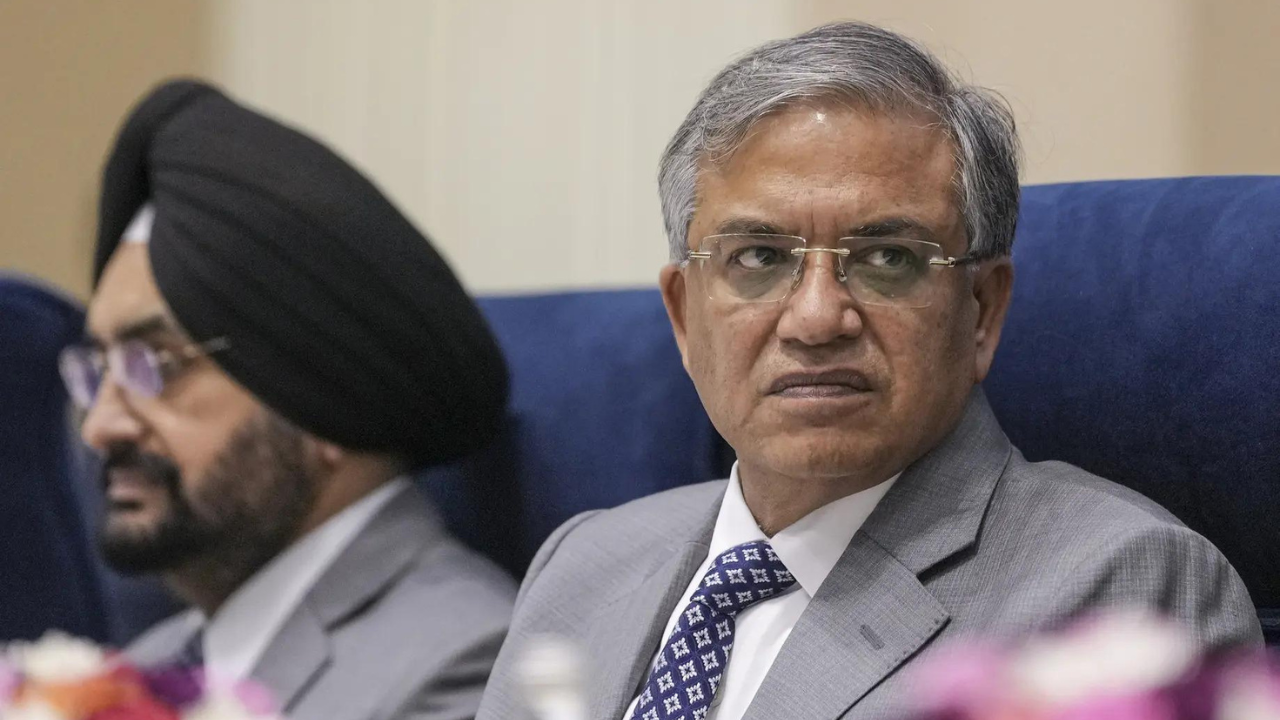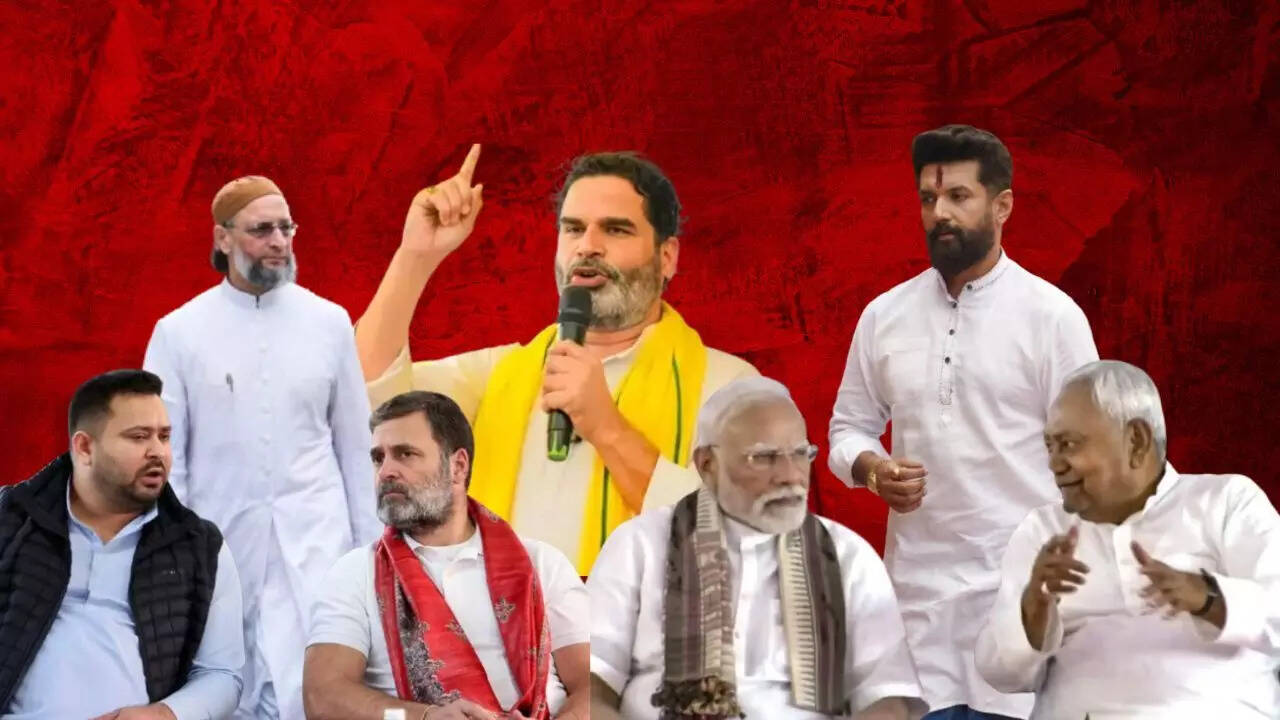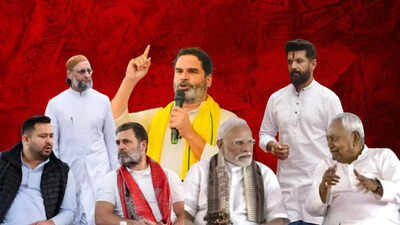NEW DELHI: The Election Commission of India (ECI) on Monday gave a go-ahead for the mega Bihar battle by announcing the assembly election dates, which will take place in two phases – first on November 6 and second on November 11. The fate sealed on these two days will be disclosed on November 14, when Bihar will begin its new assembly term.Though the Election Commission has waved the green flag, a quiet but frantic churn runs through Bihar’s political corridors as parties and alliances scramble to crack the winning arithmetic.Be it the mammoth NDA, the challenger Mahagathbadhan or the claiming to be a disruptor Jan Suraj — none of the camps have declared candidates for the 224-member Bihar assembly.Even as parties prepare to unveil their candidates, their tight-lipped approach hints at a deeper struggle. The seat-sharing negotiations are proving to be tricky for heavyweights like the BJP-led NDA and the RJD-led Mahagathbandhan, who are trying to accommodate as many allies as possible to avoid a split in votes — while ensuring they don’t cede too much space in the name of coalition ‘dharma‘.
The NDA juggle
The National Democratic Alliance (NDA) comprises Prime Minister Narendra Modi’s BJP, Bihar chief minister Nitish Kumar’s JD(U), Chirag Paswan’s Lok Janshakti Party (Ramvilas) and Jitan Ram Manjhi’s Hindustani Awam Morcha (HAM).Each of these parties represents a key chunk of the electorate in Bihar, especially CM Nitish Kumar, who enjoys the loyal support of the Extremely Backward Classes (EBCs), which make up about 36% of Bihar’s population.However, there’s a catch. The EBC voter base is fragmented into 113 castes (82 Hindu, 31 Muslim). Therefore, the non-Muslim EBC base, which is about 26%, combined with Kurmi and Koeri votes, largely prefer to vote for Nitish Kumar.The BJP leans on upper-caste blocs, Brahmins, Rajputs, Bhumihars and Kayasthas, who, while a minority, wield outsized influence. However, the party, which is aiming to be self-sufficient in Bihar without relying heavily on the JDU alliance, has broadened its outreach to non-Yadav OBCs and EBCs by elevating leaders from those groups and secured roughly 30% of votes in recent contests through this social mix.The BJP recently seems to have reached out to the non-Yadav OBC electorate with an aim to consolidate the non-RJD backward vote blocks. The non-Yadav Other Backward Classes (OBCs) constitute approximately 12.86% of Bihar’s total population.This group includes communities such as Kurmi (2.87%), Koeris (4.2%), Teli (2.81%), Mallah (2.6%) Bania (2.31%), among others. These communities are politically significant and play a crucial role in the state’s electoral dynamics.Chirag Paswan’s Lok Janshakti Party targets Dalits, especially the Paswan community (about 9% of Bihar’s population), and is estimated to command roughly 7–8% support, sometimes challenging broader caste coalitions by pressing for Dalit representation.Jitan Ram Manjhi’s Hindustani Awam Morcha represents Musahar Dalits (around 3%), a smaller but locally pivotal force in some districts. The 2022 caste survey shows OBCs and EBCs together make up about 63% of Bihar’s population, marking them the decisive electoral bloc.
Mahagathbandan’s calculus
The Mahagathbandhan (Grand Alliance) in Bihar faces a complex caste and electoral landscape shaped by the state’s diverse demographic composition.Bihar’s total population of approximately 13.07 crore is divided along caste lines as follows: Extremely Backward Classes (EBCs) constitute about 36.01%, Other Backward Classes (OBCs) 27.12%, Scheduled Castes (SCs) 19.65%, Scheduled Tribes (STs) 1.68%, and General Category about 15.38%.Within the Mahagathbandhan in Bihar, the Rashtriya Janata Dal (RJD) enjoys strong support from Muslims and Yadavs. Muslims make up about 17.7% of Bihar’s population, and around 80-87% of Muslim votes have historically gone to RJD.Yadavs, comprising roughly 14.3% of the state’s population, are also core supporters of RJD. Together, this Muslim-Yadav combination makes up more than 30% of the electorate supporting RJD.The Indian National Congress garners support mainly from upper castes, some OBC sub-groups, and urban voters, forming a moderate but significant segment of the Mahagathbandhan.The Vikassheel Insaan Party (VIP) appeals primarily to Koeri/Kushwaha OBCs, who constitute approximately 4.2-4.3% of Bihar’s population, and the party is expected to contest around 15 to 20 seats.Left parties like CPI and CPI(M) have smaller, localised influences mainly among Extremely Backward Classes (EBCs) and certain other backward communities.
The Owaisi factor
In Bihar’s politically charged landscape, the Seemanchal region stands out as a game-changer, with a unique demographic makeup, nearly 47% Muslim population, far above the state average of 17%, which was leveraged effectively by Assaduddin Owaisi’s party.In the 2020 Bihar Assembly elections, AIMIM contested 20 seats and won 5 seats, all from this region where Muslims constitute a significant portion of the population. Around 68% in Kishanganj, 44-45% in Katihar and Araria, and 39% in Purnea. AIMIM’s vote share in Bihar increased to about 1.24% in 2020 overall, but it had a substantial localised effect in Seemanchal, where it defeated BJP candidates and emerged as a key player.
Prashant Kishore: Disruptor or vote splitter?
Prashant Kishor, the strategist-turned-politician, is expected to play a pivotal role in the Bihar elections with his newly launched Jan Suraaj Party (JSP). Kishor has announced that his party will contest all 243 seats independently, refusing to form alliances, positioning himself as a radical alternative to the established duopoly of JD(U)-BJP (NDA) and RJD-Congress (Mahagathbandhan).As a seasoned poll strategist with a successful track record, Kishor’s entry disrupts traditional caste-based electoral equations by focusing on governance failures, corruption allegations against key leaders, and development issues rather than identity politics. His sharp criticism targets both NDA and Mahagathbandhan leaders, challenging their credibility and governance.He has described this election as a make-or-break moment for his party, stating it will either finish first or last, leaving no middle ground.




